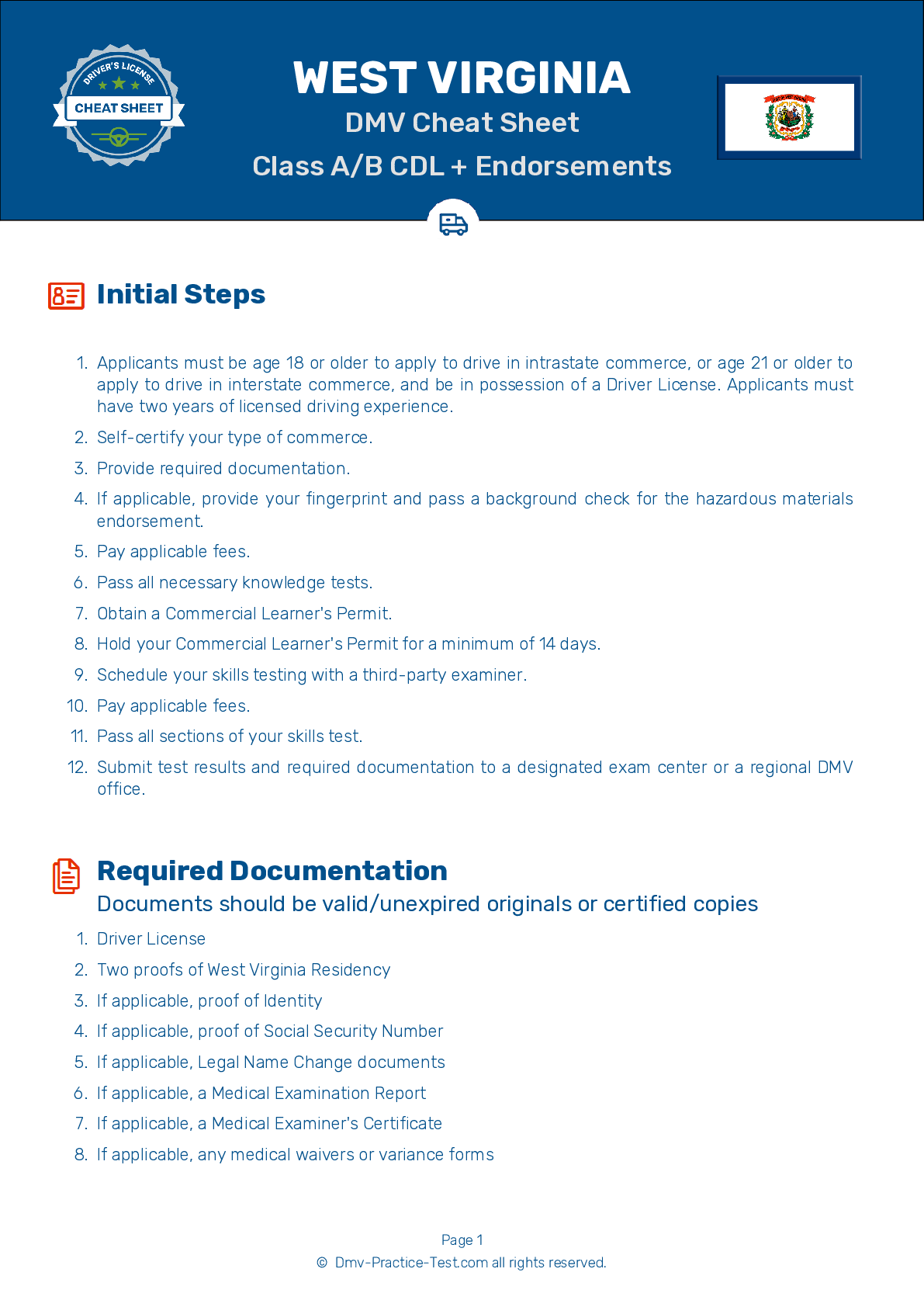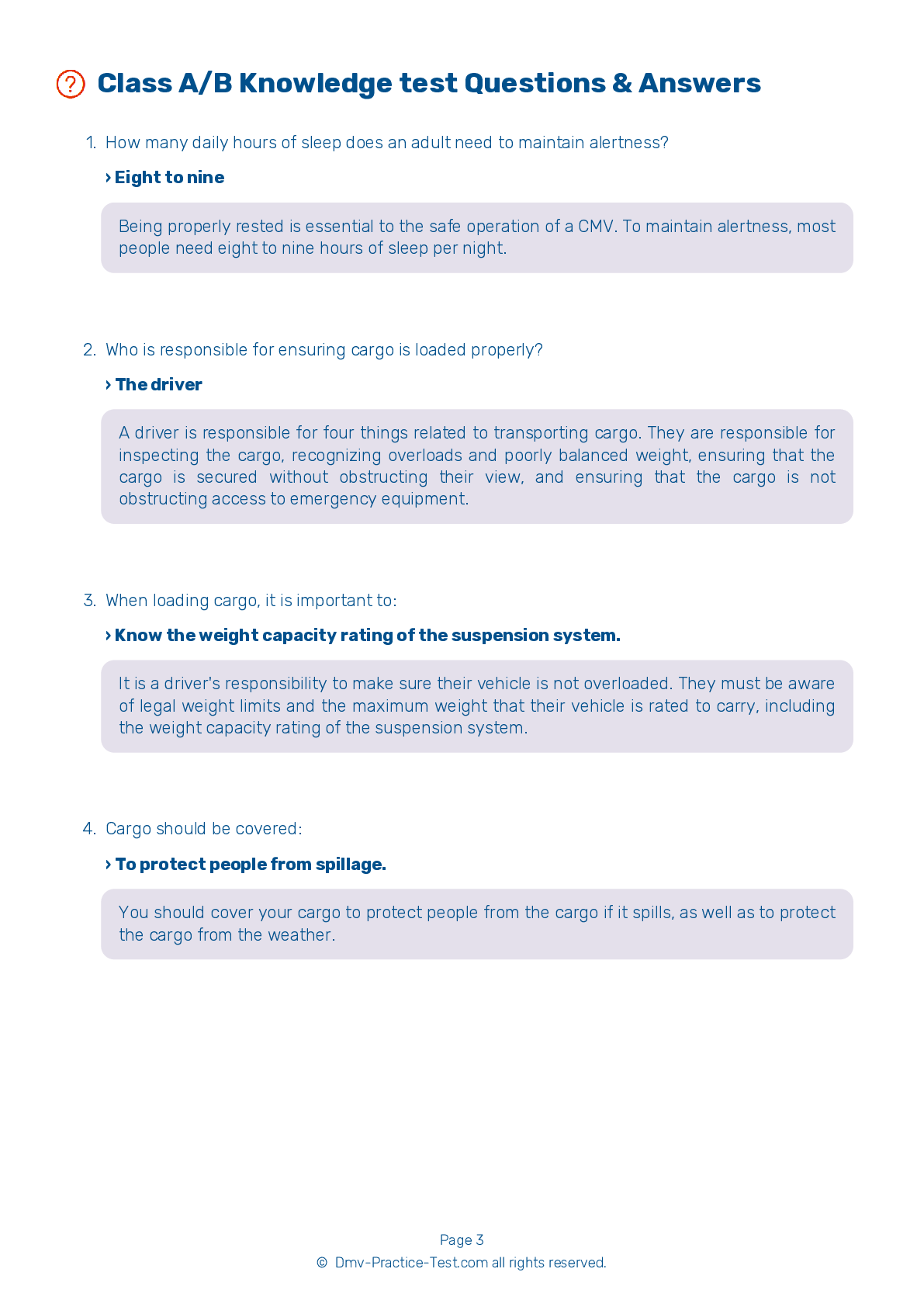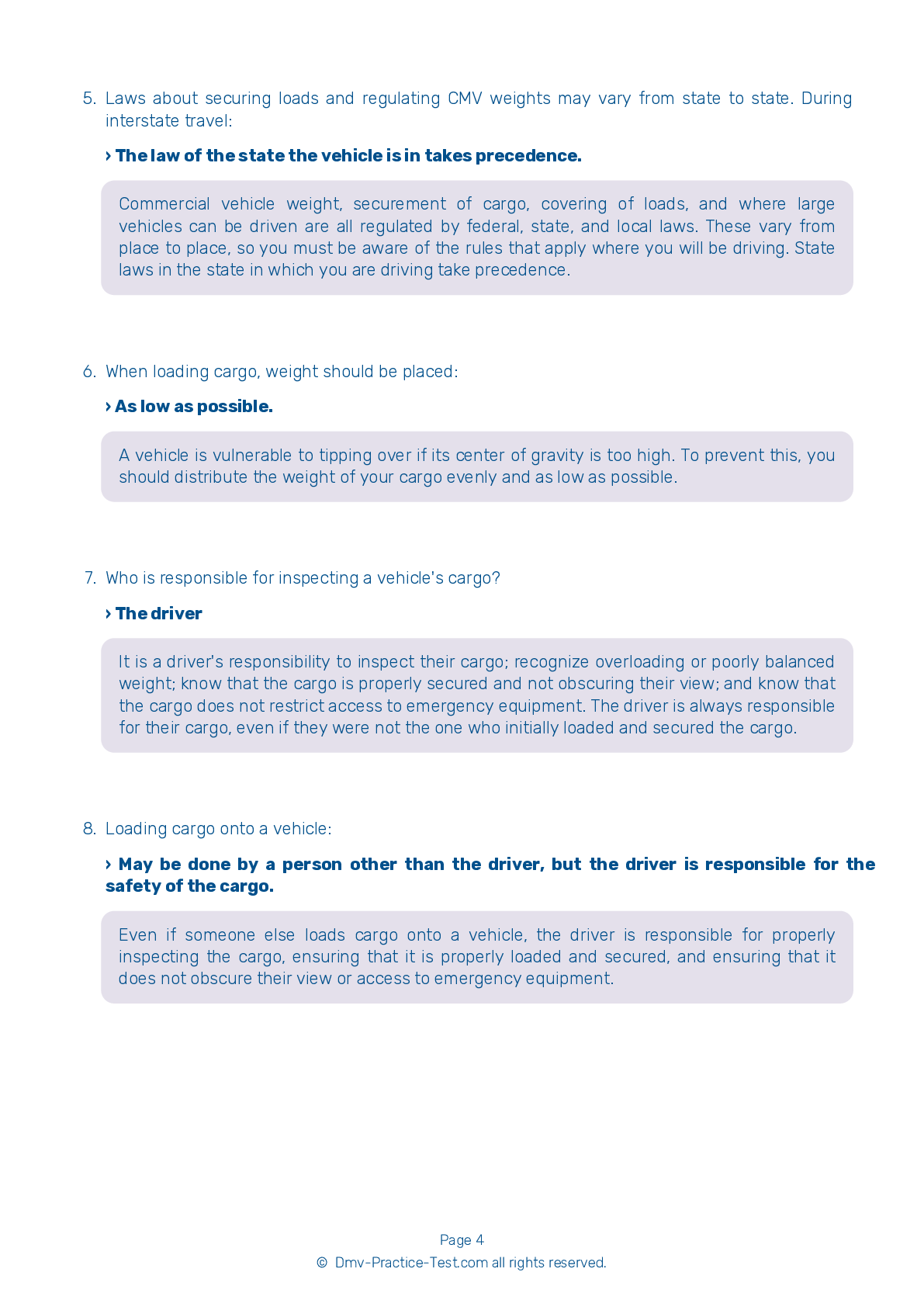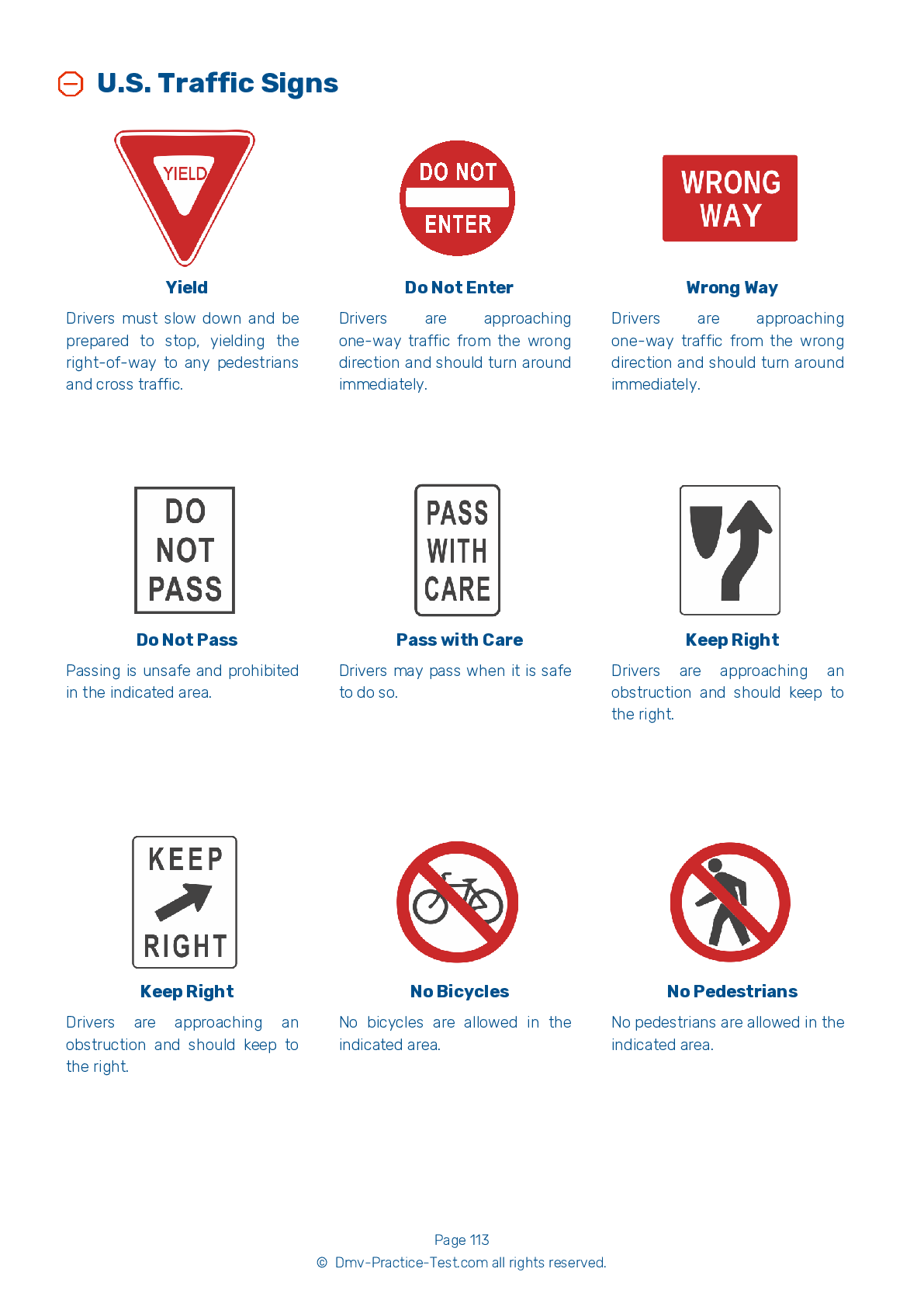Bus #2
Bus Driver Testing | West Virginia 2025 #2 Page 2 of 3
Train for FREE online with our WV bus CDL test. The official exam test consists of several obligatory parts, with all of them checking your knowledge of different blocks of road rules. If you need to obtain a license in West Virginia in 2025, learn how to become a bus driver and then practice as much as possible. Free sample tests published on our website will help you check and improve your knowledge and boost your grades. Please bear in mind that DMV requirements for a bus driver may vary from state to state.
20
16
20
8 . A properly adjusted flat mirror should allow the driver to see:
The front bumper.
Properly adjusted flat mirrors on a school bus should allow the driver to see 200 feet behind the bus, the base of each rear wheel, and the sides of the bus.
9 . If your bus's Anti-Lock Braking System (ABS) stops working:
You should not brake.
If its Anti-Lock Braking System (ABS) is not working, a vehicle will still retain its normal braking power. The driver should continue to drive and brake in a normal fashion.
10 . Where are danger zones of a school bus located?
On top of the bus
The danger zones of a school bus are areas in which children are most likely to be hit, either by another vehicle or by the bus itself. Such areas are located to the front, sides, and rear of a bus.
11 . ABS helps you:
Predict the weather.
An Ant-Lock Braking System (ABS) helps stop a vehicle's wheels from locking up during hard brake applications.
12 . As students exit the bus, the driver should watch students to ensure that:
They all have shoes on.
The driver of a school bus should observe students as they enter or exit the bus to ensure that they are not caught in the door or handrails. It is also important to make sure the students have moved a safe distance away from the unloading area after they have exited the bus.
13 . When conducting a vehicle inspection, you must show each of the following, except:
That the oil pressure gauge comes on when brakes are used.
When checking the oil pressure gauge as part of a vehicle inspection test, you must ensure that it is working. The gauge should show increasing or normal oil pressure, or the oil pressure warning light should turn off. If equipped with one, the oil temperature gauge should begin a gradual rise to the normal operating range.
14 . When students are boarding a school bus, the driver should do all of the following, except:
Check all mirrors for students rushing toward the bus.
Students should always board a school bus in a single-file line.
2025 West Virginia | Frequently Asked Questions
To secure a CDL Bus endorsement in West Virginia, you must first have a Commercial Driver's License (CDL). Next, pass the passenger endorsement knowledge test. Then, complete a training course specific for bus drivers. Finally, pass the skills test in a bus of the same vehicle group. Remember, you must be at least 21 years old to drive across state lines.
To obtain a CDL Bus license, you must already hold a valid Commercial Driver's License (CDL). You'll need to pass the passenger endorsement knowledge test and complete a bus-specific training course. Finally, pass the skills test in a bus of the same vehicle group. You must be at least 21 to drive a commercial vehicle across state lines.
Yes, specific training is required for a CDL Bus endorsement in West Virginia. You must complete a CDL training course and pass the passenger endorsement test, which includes a written knowledge test and a skills test. The skills test covers vehicle inspection, basic controls, and on-road driving. No specific prior experience is required, but a clean driving record is essential.
CDL Bus licenses fall into three main classifications: Class A, Class B, and Class C. Class A is for any combination of vehicles with a combined GVWR of 26,001 pounds or more. Class B is for single vehicles with a GVWR of 26,001 pounds or more. Class C is for vehicles designed to transport 16 or more passengers, including the driver. Each requires specific testing.
No, you cannot use your personal vehicle for the CDL Bus driving test. The test must be taken in the same type of vehicle for which you are seeking a license. Therefore, you must use a commercial bus for the CDL Bus driving test to accurately demonstrate your ability to handle such a vehicle.
During the CDL Bus driving test in West Virginia, you'll be evaluated on skills like pre-trip vehicle inspection, basic vehicle control, and on-road driving. You may be asked to perform maneuvers such as turning, merging, backing up, and parking. You'll also be assessed on safe driving practices like maintaining appropriate speed and following distance.
Yes, there are additional medical requirements for a CDL Bus endorsement. Drivers must pass a Department of Transportation (DOT) physical examination every two years. The exam assesses general health, vision, hearing, and ability to safely operate a vehicle. Certain medical conditions like high blood pressure or epilepsy may disqualify an individual. Also, a drug and alcohol test is required.
No, it is not permissible to transport passengers without a valid CDL Bus endorsement in West Virginia. Operating a commercial vehicle without the proper license or endorsement can result in hefty fines, license suspension, and even imprisonment. The CDL Bus endorsement ensures the driver has the necessary skills and knowledge to safely transport passengers.
Yes, the CDL Bus endorsement can be added to your existing CDL in West Virginia. You'll need to pass the Passenger Transport test and a skills test in a passenger vehicle. You don't need to apply for a new CDL, but you must complete the necessary paperwork for the endorsement and pay associated fees.
Yes, there are restrictions for drivers with a CDL Bus endorsement in West Virginia. Drivers must abide by all traffic laws, maintain a clean driving record, and pass regular physical exams. Additionally, they cannot exceed the passenger limit for their specific vehicle type. CDL holders are also subject to stricter DUI regulations and cannot have a blood alcohol level of 0.04% or higher while operating a commercial vehicle.



